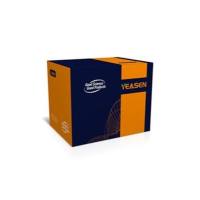There are several methods currently available for transfection of DNA into mammalian cells. These include transfection with calcium phosphate (
1 ), diethylaminoethyl (DEAE)-dextran, cationic liposomes, nonliposomal lipid compounds, and electroporation (
2 ). Each of these methods has advantages and disadvantages; selection of transfection method is based on the cell types used and personal preference. Transfection using calcium phosphate is highly efficient and is the most cost-effective method; therefore, this is the method of choice for larger-scale experiments. It is also the most widely utilized method and has been successful for DNA transfection into a variety of cell types. Our laboratory has used calcium phosphate-mediated transfection to introduce β
1 -adrenergic receptor (β
1 -AR) gene fragments into SK-N-MC, C6, and W1 cells (
3 ,
4 ). The protocol for transient transfection of adherent cells with calcium phosphate will be described in this chapter. As with other transfection methods, the efficiency of calcium phosphate-mediated transfection is largely determined by the recipient cell type. An optimized protocol for one cell type does not guarantee success in another cell type. From our experience, lipofectin transfection reagent works well for transfection of β
1 -AR gene fragments into adherent cell lines, but is much less effective for transfection of DNA into primary cultures. As noted by other investigators (
5 ), we have applied FuGENE™ 6 transfection reagent, a nonliposomal lipid compound, to transfect β
1 -AR gene fragments into 3-d-old neonatal cardiac myocytes with great efficiency (Fig. 1 ).
Fig. 1. The transfection efficiency of two different transfection reagents, FuGENE 6 (Boehringer Mannheim, Indianapolis, IN) and Lipofectin (Gibco-BRL, Grand Island, NY). Cardiac myocytes were prepared from 3-d-old neonatal rats. Cells were transfected with pGL3-control vector 2 d after plating in 24-well plates to test efficiency on primary culture. The DNA doses are indicated. Several doses of Lipofectin reagent were used, ranging from 0.8 to 1.5 μL/well. The ratio of DNA (μg)/FuGENE 6 reagent (μL) was 1/5. Cells were exposed to the transfection reagent for 20 h before harvesting for luciferase activity. Data are mean � SEM of luciferase relative light unit from four separate experiments.



![四[N-邻苯二甲酰-(S)-叔亮氨酸基]二铑双(乙酸乙酯)加合物;154090-43-4;Elemental analysis(Nitrogen) 3.30 to 4.50 %;V66234-25mg](https://img1.dxycdn.com/p/s14/2025/1029/004/8672158669127143891.jpg!wh200)


